Cambodia Part 2--IKTT and Khmer Silk Weaving
It's been a busy spring with lots of travel, so I'm just now getting around to posting about the second half of my Cambodia trip in February. In the first half of my visit, I was in
Popae Village
. The second half of my stay was spent in the Siem Reap area with five days at the forest village of
IKTT
, brainchild of Kikuo Morimoto. "Project Wisdom from the Forest" is a sustainable eco-artisan village on 23 hectares of land about an hour north of Siem Reap. I was there to learn about ikat weaving in the Khmer tradition, to understand the natural dyeing techniques employed, and to meet the amazing founder.
Kikuo Morimoto was born in Kyoto and trained in yuzen painting and dyeing. He moved to Cambodia via Thailand in the 1980s and has been a key figure in reviving Khmer traditional silk weaving ever since. Morimoto-san speaks his native Japanese, plus Khmer, English, Thai and even some Lao. The forest village, created from scratch, is a communal eco-village with some 150 Cambodian inhabitants on reforested land. The aim was to create a thriving, sustainable community for reviving Khmer silk weaving techniques and producing ikat textiles of the highest quality. Ten years have passed since he put up his first building on the land--a small tree house. And now the village is considered a model community--even Cambodian royalty visit each year for the IKTT silkworm festival.
A few photos from my visit:
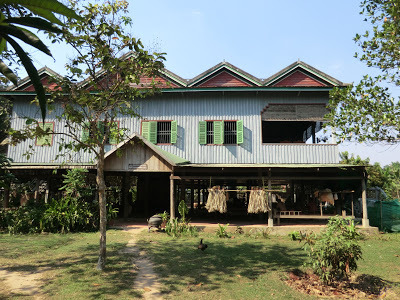 IKTT PWF weaving workshop downstairs, shop upstairs
IKTT PWF weaving workshop downstairs, shop upstairs
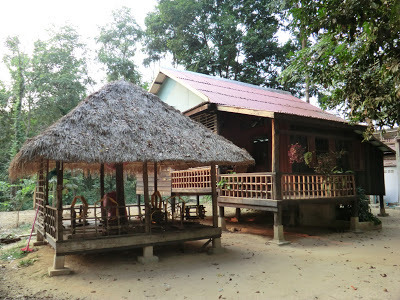 my guest cottage on the right beside a spinning/reeling hut
my guest cottage on the right beside a spinning/reeling hut
 stirring the dye for my natural dyeing experiment with prohut tree bark
stirring the dye for my natural dyeing experiment with prohut tree bark
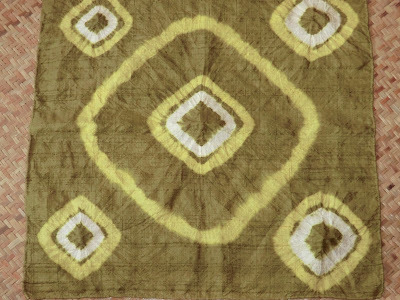 my results--some hand spun silk dyed with prohut and an over dye of lime/iron
my results--some hand spun silk dyed with prohut and an over dye of lime/iron
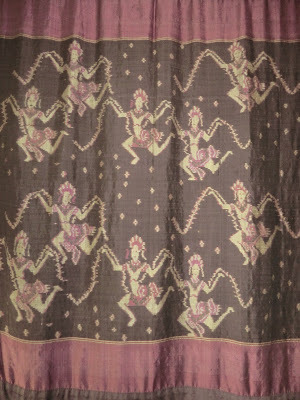 ikat panel of apsara dancers
ikat panel of apsara dancers
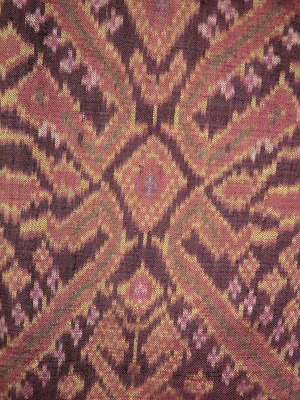 ikat up close
ikat up close
 sunrise
sunrise
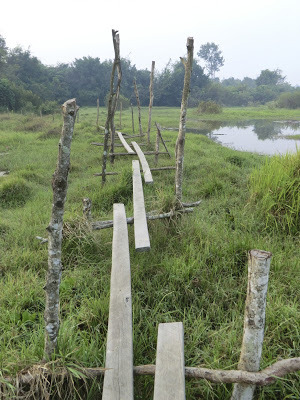 my favorite morning walk
my favorite morning walk
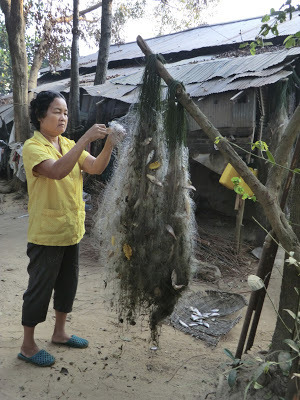 the morning's catch
the morning's catch
 fish for breakfast
fish for breakfast
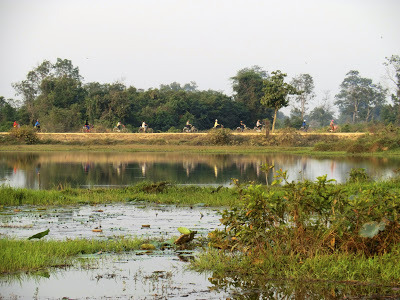 Women arriving at the village by bicycle
Women arriving at the village by bicycle
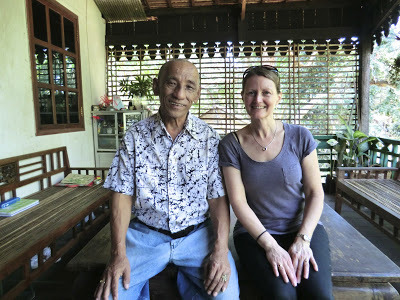 with Kikuo Morimoto
with Kikuo Morimoto
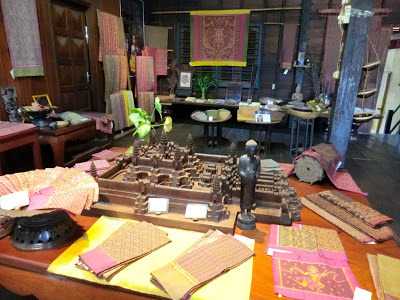 the IKTT shop in Siem Reap
the IKTT shop in Siem Reap
If you visit Siem Reap, be sure to go to the IKTT shop to see ikat textiles of the highest quality in Cambodia, made from traditional Khmer silk, hand reeled, dyed, and woven. And check out the IKTT blog (in Japanese) for even more photos and IKTT happenings in Japan.
Kikuo Morimoto was born in Kyoto and trained in yuzen painting and dyeing. He moved to Cambodia via Thailand in the 1980s and has been a key figure in reviving Khmer traditional silk weaving ever since. Morimoto-san speaks his native Japanese, plus Khmer, English, Thai and even some Lao. The forest village, created from scratch, is a communal eco-village with some 150 Cambodian inhabitants on reforested land. The aim was to create a thriving, sustainable community for reviving Khmer silk weaving techniques and producing ikat textiles of the highest quality. Ten years have passed since he put up his first building on the land--a small tree house. And now the village is considered a model community--even Cambodian royalty visit each year for the IKTT silkworm festival.
A few photos from my visit:
 IKTT PWF weaving workshop downstairs, shop upstairs
IKTT PWF weaving workshop downstairs, shop upstairs
 my guest cottage on the right beside a spinning/reeling hut
my guest cottage on the right beside a spinning/reeling hut
 stirring the dye for my natural dyeing experiment with prohut tree bark
stirring the dye for my natural dyeing experiment with prohut tree bark
 my results--some hand spun silk dyed with prohut and an over dye of lime/iron
my results--some hand spun silk dyed with prohut and an over dye of lime/iron
 ikat panel of apsara dancers
ikat panel of apsara dancers
 ikat up close
ikat up close
 sunrise
sunrise
 my favorite morning walk
my favorite morning walk
 the morning's catch
the morning's catch
 fish for breakfast
fish for breakfast
 Women arriving at the village by bicycle
Women arriving at the village by bicycle
 with Kikuo Morimoto
with Kikuo Morimoto
 the IKTT shop in Siem Reap
the IKTT shop in Siem ReapIf you visit Siem Reap, be sure to go to the IKTT shop to see ikat textiles of the highest quality in Cambodia, made from traditional Khmer silk, hand reeled, dyed, and woven. And check out the IKTT blog (in Japanese) for even more photos and IKTT happenings in Japan.
Published on April 24, 2013 02:14
No comments have been added yet.



